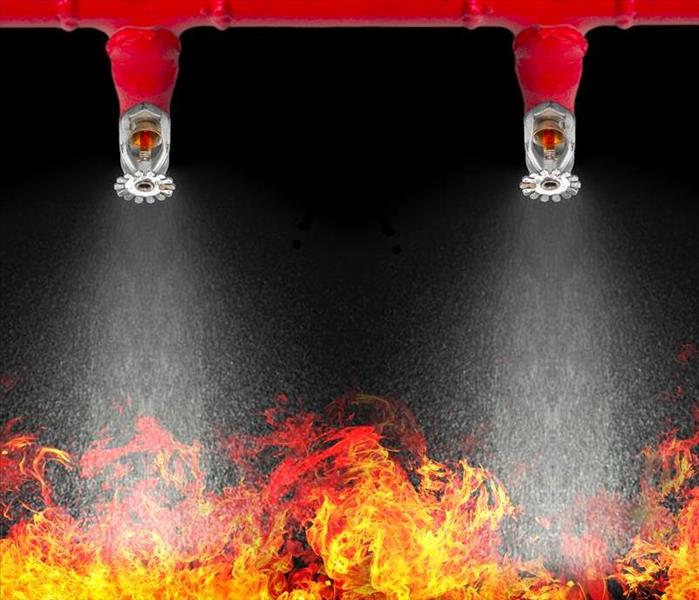5 Steps in Sprinkler Maintenance and Accidental Discharge Prevention
1/13/2022 (Permalink)
One of the big causes of damage to commercial properties is the accidental activation of fire sprinklers. The cost of repairing the water-logged property in North St. Paul, MN is much more than the cost of sprinkler maintenance.
The amount of water and water pressure that flows from fire prevention systems leads to thousands of dollars of damage. Because these systems are critical in preventing fire damage, it is essential that the heads and every other component are in good working condition.
How Sprinkler Maintenance Prevents Accidental Activation
One of the first steps in sprinkler maintenance is understanding the causes of accidental discharge. With this understanding, you'll be ready to take steps to avoid activation and prevent costly damage. Many heads are triggered by high temperatures. This heat either causes a metal link to melt or a glass bulb to burst. This leads to a rush of water. The simple mechanisms that provide a reliable response to fire also leave the system susceptible to untimely activation:
1. High Temperatures From Sources Other Than Fire
Any heads situated near light bulbs, cooking equipment, skylights, heating vents, and other sources of heat may discharge. Temporary sources of heat, such as construction equipment and high-powered lights are common sources of high temperatures. The solution to this problem is careful, preventative calibration of sprinkler heads. Part of routine system maintenance should include making sure that each head and its calibration is appropriate for the head's position and exposure.
2. Freezing Temperatures
A sudden drop in temperature won't activate a sprinkler head, but it can put enormous pressure on the pipes when the water inside freezes and expands. Even if a small part of the system is exposed to icy temperatures, pressure from the developing ice inside the pipes can cause broken components, cracked pipes, and forced valves. Preventative maintenance includes professional antifreeze solutions, added insulation, and building repairs such as sealing any cracks and gaps around doors and windows.
3. Rust and Corrosion
These sources of damage are a consistent concern for professionals in the fire protection industry. This is because the mix of water, oxygen, and iron is the perfect recipe for electrochemical corrosion. When this happens inside the pipes, it's hard to detect and prevent holes along the system. Routine testing is necessary to prevent unwanted discharge and, worse, failure of the system during a fire.
4. Mechanical Damage and Defects
This is one of the most common causes of accidental sprinkler activation. You may tighten a head too much or bump into a system component with a forklift. Sometimes, the simple passage of time and the resulting wear and tear can lead to worn parts. Routine inspections and professional replacement of parts can prevent unexpected gushes of water. Head guards are available that protect sprinkler heads from being bumped and broken.
5. Deliberate Sabotage
Whether it's a cigarette or match held up to a head or deliberate damage to the fire sprinklers, purposeful sabotage of the system is a leading cause of accidental discharges. The installation of head guards, putting sprinklers in hard-to-reach areas, and upgrading to industrial-strength components are some of the best ways to prevent sabotage.
Every minute following accidental activation can lead to thousands of dollars of professional water damage and restoration. Routine sprinkler maintenance and testing is the best way to ensure a system that works well and doesn't activate when it shouldn't.

 24/7 Emergency Service
24/7 Emergency Service
